New ‘scandalous’ gender pay gap figures released
Despite the gender pay gap falling to new lows, there are calls for more to be done to help Aussie women.
Australia’s gender pay gap has moved in the “right direction”, falling to the lowest figure on record, but experts say more needs to be done.
On average, women now earn 87 cents for every $1 earned by a man, according to new data on average weekly earnings released by the Australian Bureau of Statistics (ABS).
Women’s average weekly full-time earnings across all industries and occupations now sits at $1,656.60 as of November 2022, which is $253.50 less than the $1,907.10 earned by Australian men.
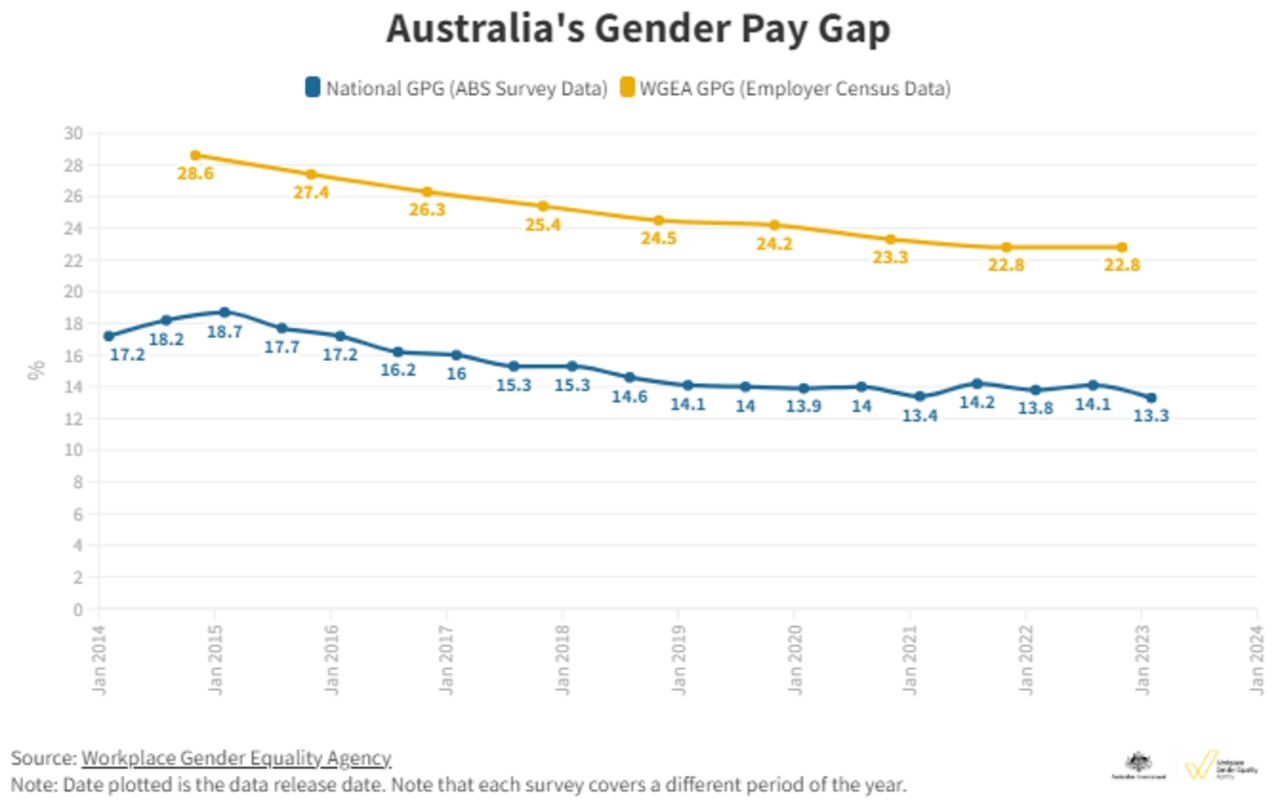
Despite the new record low figure of 13.3 per cent, Sydney University Gender, Work and Employment Relations Professor Rae Cooper says the figures are striking when you consider that more women than ever before have a university education.
“At the moment of all women in the labour force [aged 25 to 35], 50 per cent have a bachelor’s degree or more,” she said.
“So you’ve got this quite stable national gender pay gap and you’ve got in one generation real labour market shaking in terms of women’s investment in themselves.
“So I think it’s actually completely scandalous that we have a gender pay gap at all and that it’s stayed at a reasonable stable rate.”
Professor Cooper said if the gender pay gap was to close, more needed to be done to value the work done in highly feminised industries such as healthcare.
“If you shift up the wages of those workers and you better value those workers for the highly skilled, economically and socially important work that they do, that is one thing that will really change the dial,” she said.
“Men’s work tends to be better paid, tends to be more stable, more secure and tends to have a better career path.”
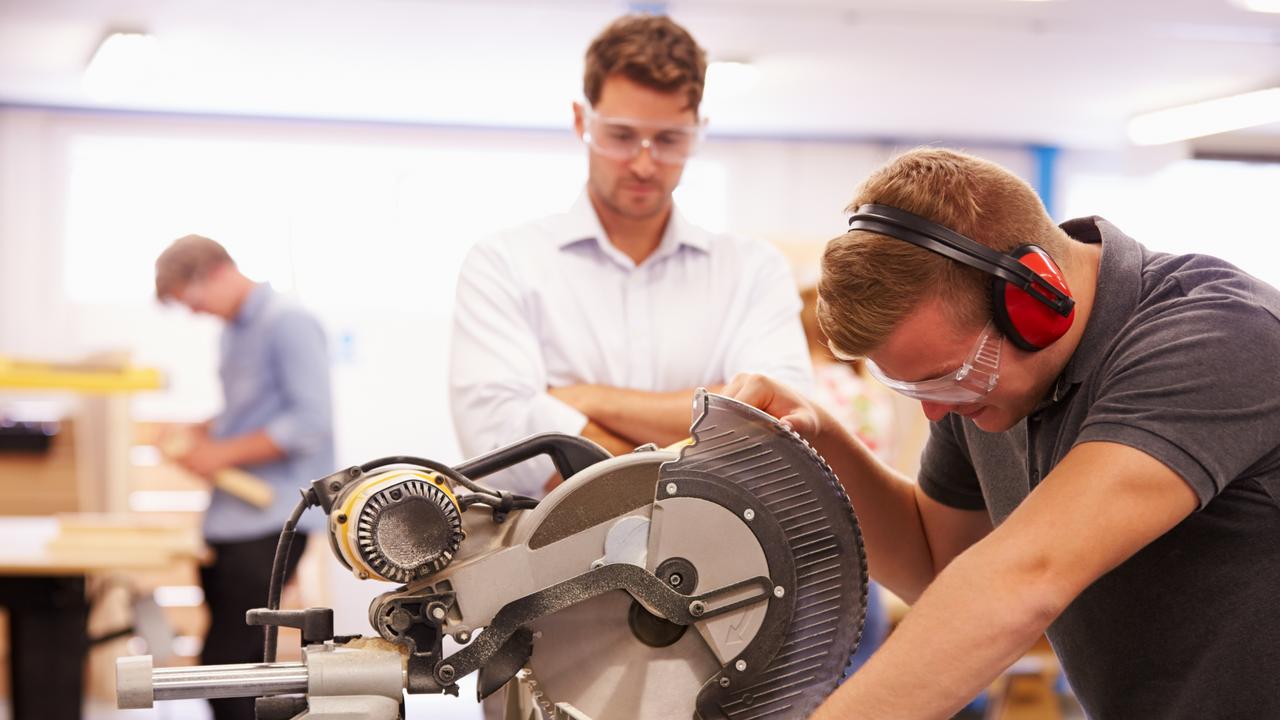
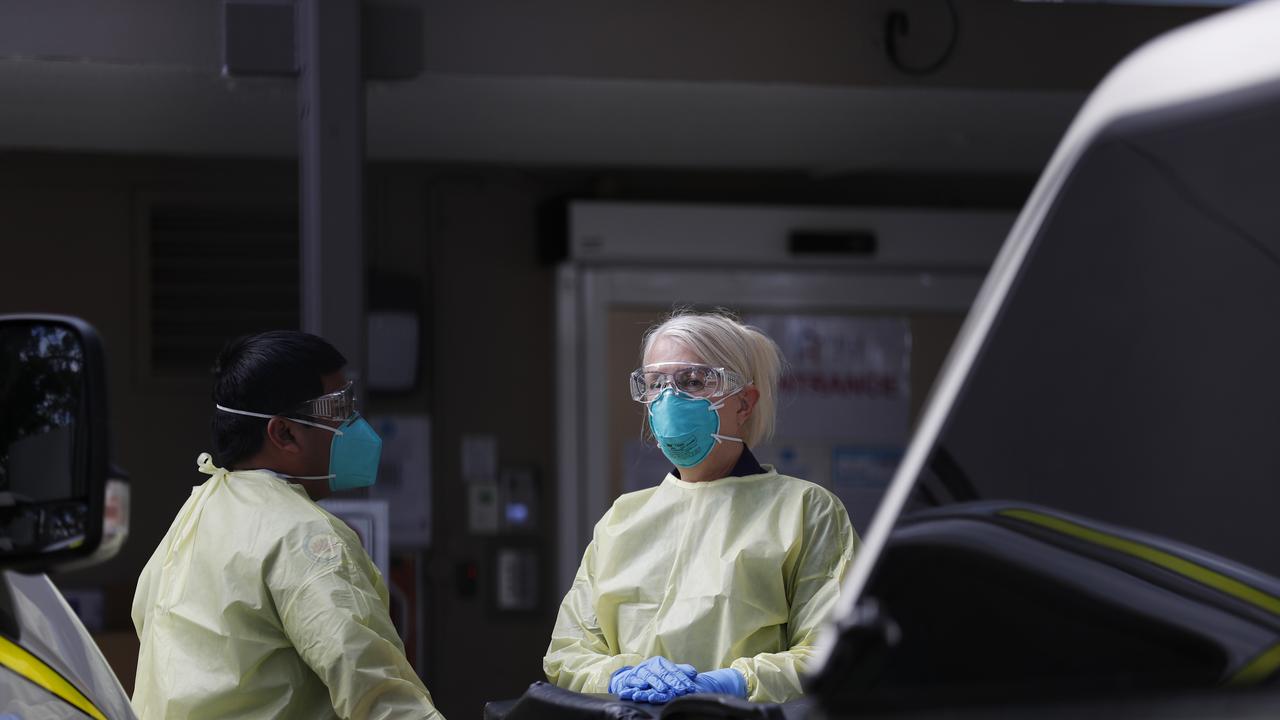
The persistent gender pay gap is a “reflection of the way we value women’s and men’s contributions to the workforce”, according to Workplace Gender Equality Agency (WGEA) director Mary Wooldridge.
“Over the course of one year, the weekly difference of $253.50 adds up to $13,182,” she said.
“That’s income that could have gone towards meeting bills, mortgage repayments or additional contributions to superannuation funds for retirement.”
Those employed in professional, scientific and technical services such as accountants, lawyers, and scientists face the highest pay gap of 21.2 per cent or $498.20 per week.
That’s closely followed by healthcare and social assistance worker, with women in that sector paid 21.1 per cent or $437.80 less each week.
Accommodation and food services workers and those in public administration have the smallest gaps at 6.0 per cent and 3.7 per cent respectively.
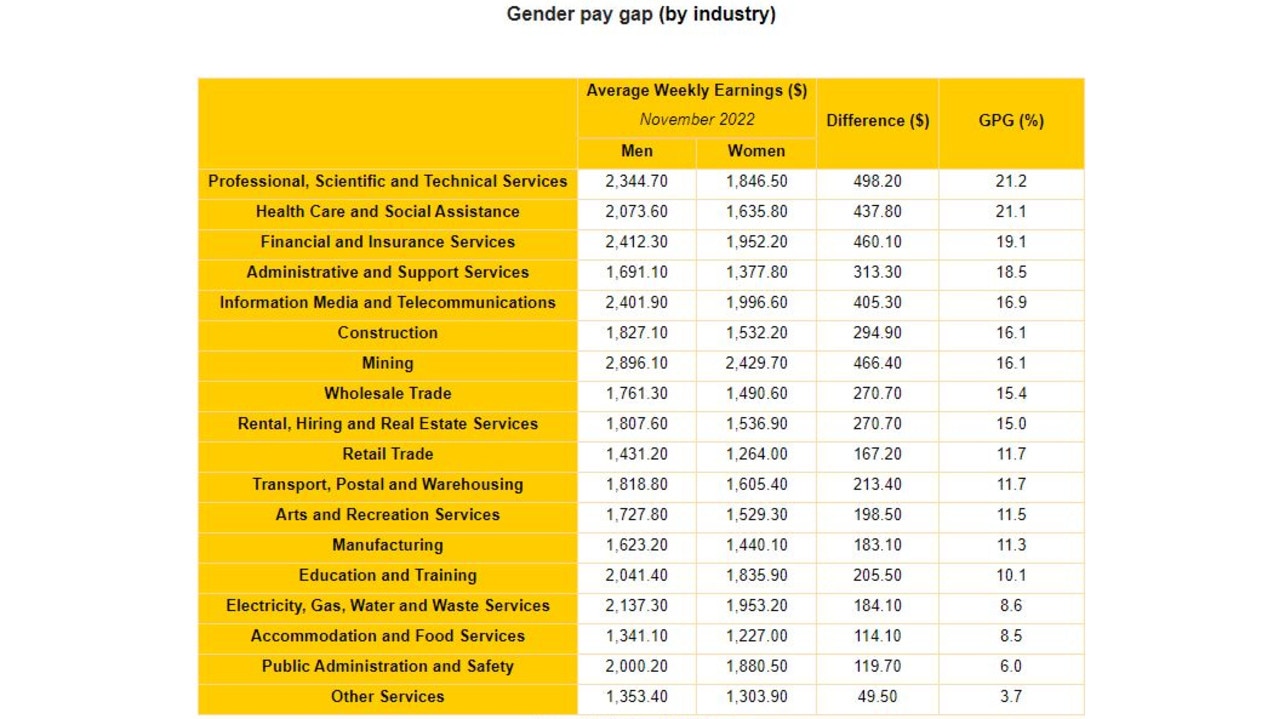
The new data is not a full picture of the split between what men and women get paid in Australia as they don’t include data on the wages of part-time and casual workers, a figure that Professor Cooper says would be “much worse” than 13.3 per cent.
“It’s a best-case scenario, that percentage point, and I think that’s scandalous and outrageous that we have that gap,” she said.
The figures also do not include remuneration such as bonuses, overtime payments or superannuation.
Ms Wooldridge said the total remuneration gender pay gap is consistently 5% greater than the gender pay gap for base salaries alone.
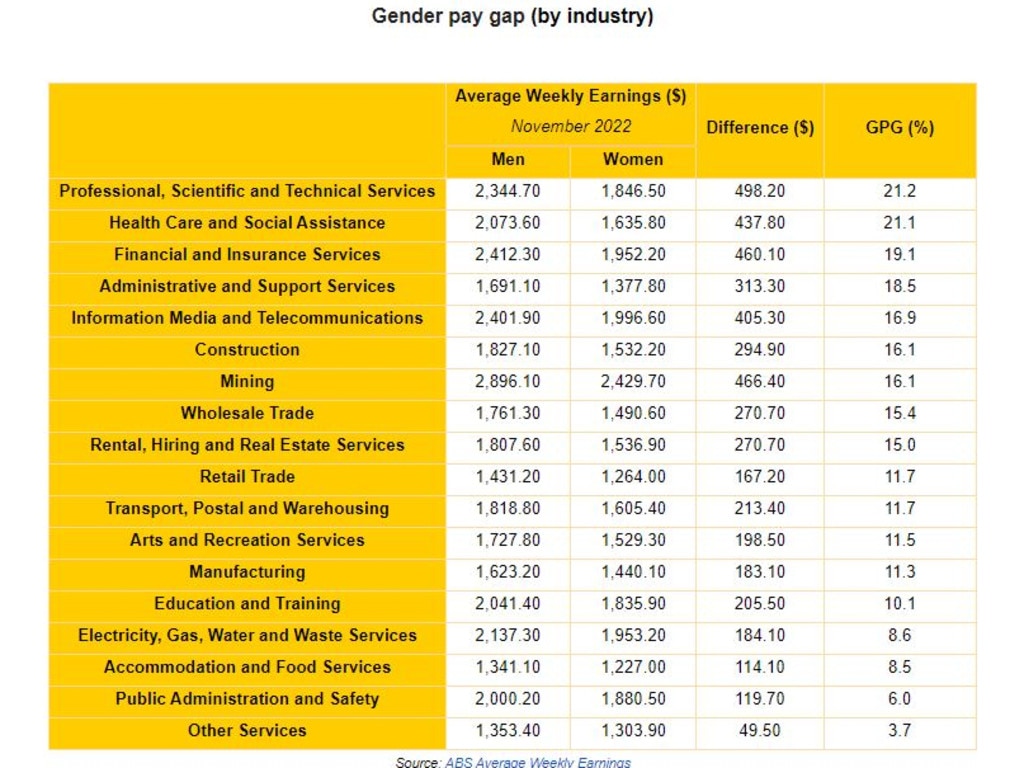
Closing the gender pay gap has never been more important due to the increasing pressure of inflation and the cost of living crisis, Professor Cooper said.
“Women are already behind the wages eight-ball, and inflation poses a real challenge,” she said.
“We need to be looking at better valuing women‘s work in order for them to be able to have the spending power that men have.”



